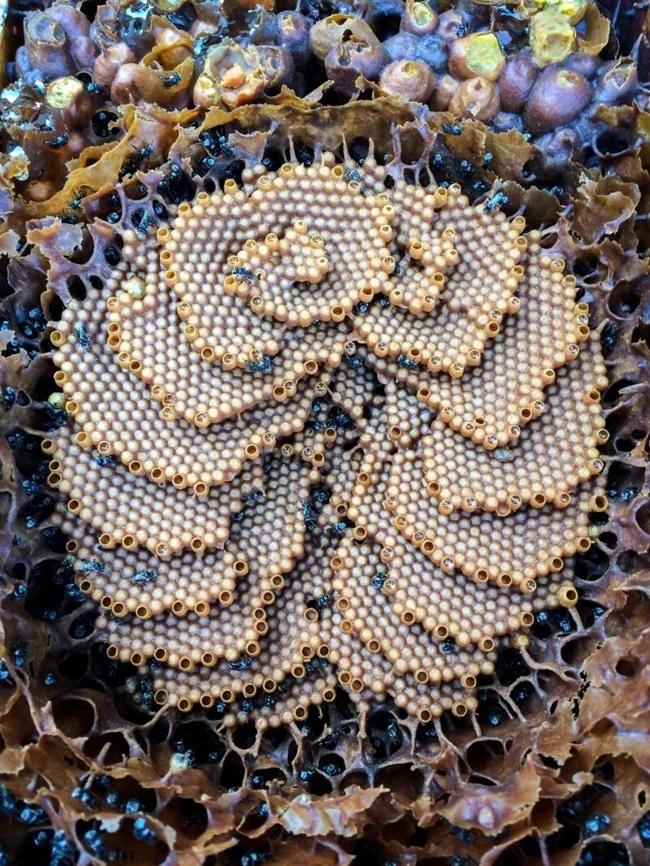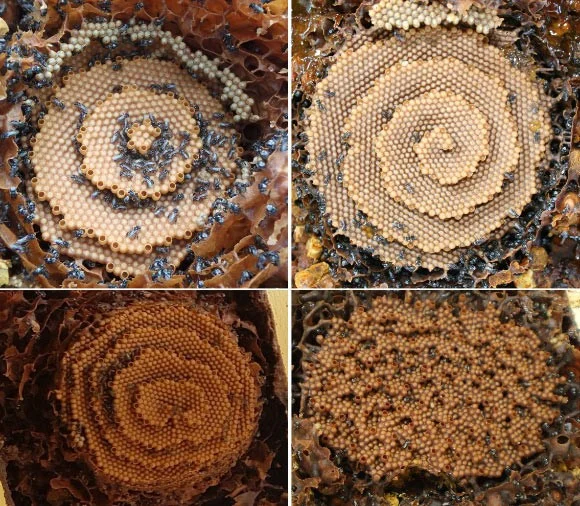An architectural masterpiece of Australian bees: mysterious spiral hives (8 photos + 1 video)
Not all bees sting. About five hundred of the twenty thousand species have lost this ability during evolution. Instead, they use other defense methods: they use their jaws, attacking intruders with a shower of wax, plant resin, and soil particles. They simply overwhelm larger predators with sheer numbers. 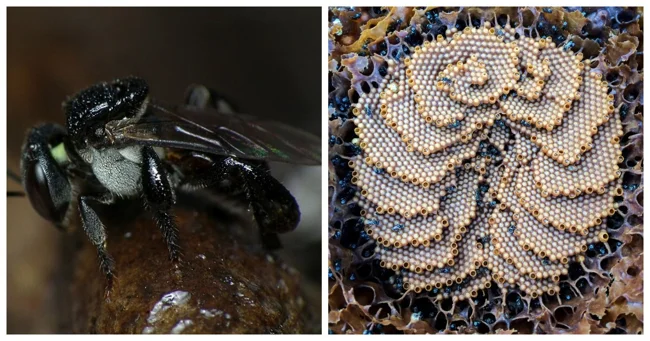
Fourteen species of these stingless bees are endemic to Australia. Particularly notable among them are Tetragonula carbonaria (sugar bees, or bush bees), known for their stunningly beautiful honeycombs. 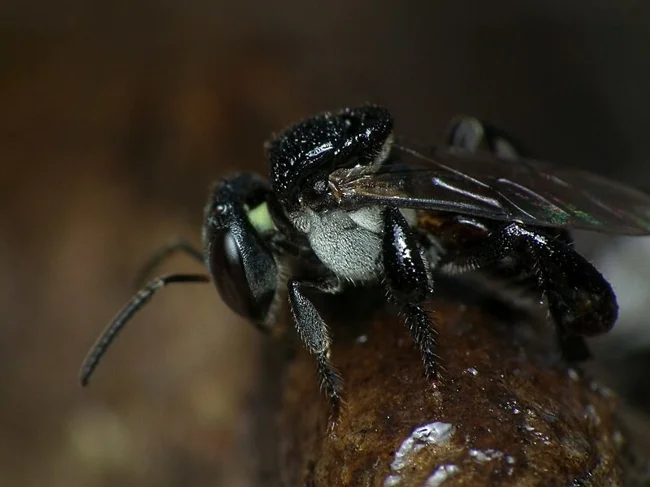 2
2
Tetragonula carbonaria are typically smaller than other stingless species. They are predominantly black in color, and their bodies are covered with microscopic hairs. These bees build combs in a unique spiral shape, which is their distinctive feature. The combs are wide and flat, but each turn of the spiral gradually increases in height, giving the entire nest a flattened conical shape. A fully formed nest can contain up to twenty such spirals. 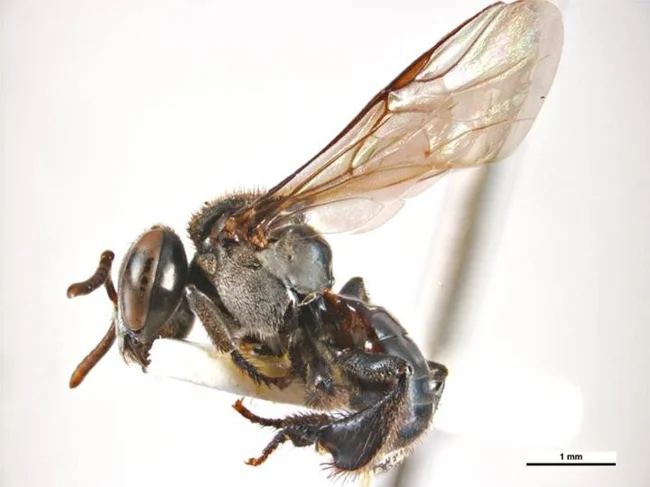
Carbonaria hives have only one entrance, which is securely guarded by guard bees and coated with a special mixture of wax and resins. The resins, which have antibacterial properties, cleanse the bees of pathogens upon their return to the hive. This same substance effectively repels predators such as ants and beetles. 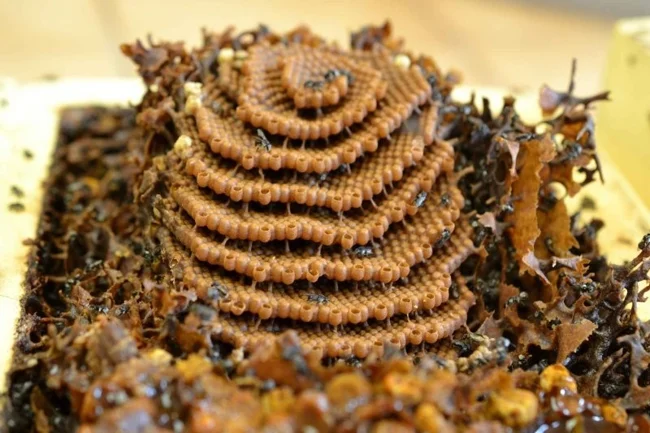
The exact reason why bees build spiral hives is unknown. It may improve air circulation, especially given that other bee colonies often suffer from poor ventilation. 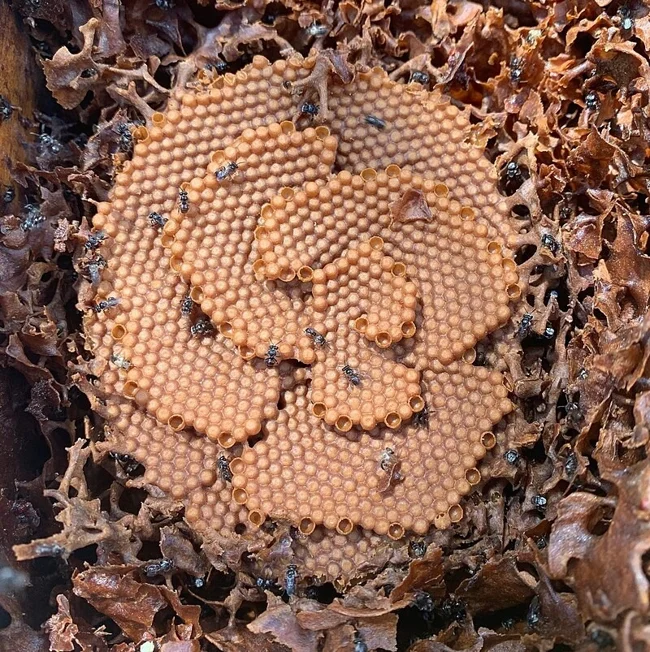
Perhaps these hives are simply the result of a random behavioral pattern, or perhaps they actually have adaptive advantages. One possible advantage of this design is the efficient use of space and improved air circulation between the layers. 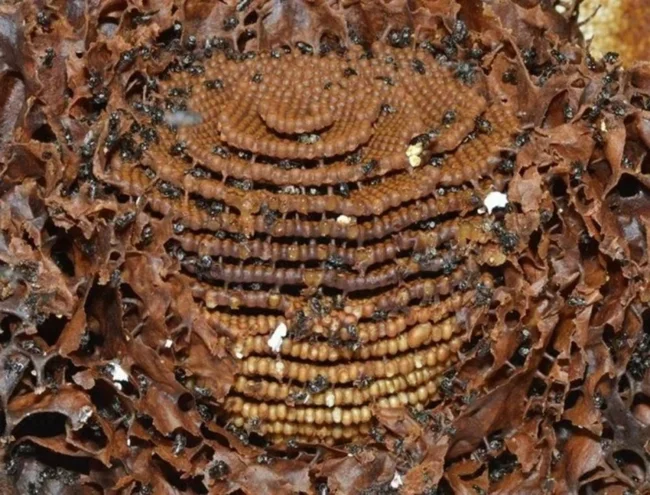
Because stingless bees are harmless, many Australian homeowners keep hives in their backyards. They are often kept not for the honey, but for pleasure and to preserve a species whose natural habitat is being destroyed by human activity. In return, the bees regularly pollinate garden flowers, agricultural crops, and wild plants in search of nectar and pollen. 